Evolutionary implications of the divergent long bone histologies of Nothosaurus and Pistosaurus (Sauropterygia, Triassic)
- PMID: 23773234
- PMCID: PMC3694513
- DOI: 10.1186/1471-2148-13-123
Evolutionary implications of the divergent long bone histologies of Nothosaurus and Pistosaurus (Sauropterygia, Triassic)
Abstract
Background: Eosauropterygians consist of two major clades, the Nothosauroidea of the Tethysian Middle Triassic (e.g., Nothosaurus) and the Pistosauroidea. The Pistosauroidea include rare Triassic forms (Pistosauridae) and the Plesiosauria of the Jurassic and Cretaceous. Long bones of Nothosaurus and Pistosaurus from the Muschelkalk (Middle Triassic) of Germany and France and a femur of the Lower Jurassic Plesiosaurus dolichodeirus were studied histologically and microanatomically to understand the evolution of locomotory adaptations, patterns of growth and life history in these two lineages.
Results: We found that the cortex of adult Nothosaurus long bones consists of lamellar zonal bone. Large Upper Muschelkalk humeri of large-bodied Nothosaurus mirabilis and N. giganteus differ from the small Lower Muschelkalk (Nothosaurus marchicus/N. winterswijkensis) humeri by a striking microanatomical specialization for aquatic tetrapods: the medullary cavity is much enlarged and the cortex is reduced to a few millimeters in thickness. Unexpectedly, the humeri of Pistosaurus consist of continuously deposited, radially vascularized fibrolamellar bone tissue like in the Plesiosaurus sample. Plesiosaurus shows intense Haversian remodeling, which has never been described in Triassic sauropterygians.
Conclusions: The generally lamellar zonal bone tissue of nothosaur long bones indicates a low growth rate and suggests a low basal metabolic rate. The large triangular cross section of large-bodied Nothosaurus from the Upper Muschelkalk with their large medullary region evolved to withstand high bending loads. Nothosaurus humerus morphology and microanatomy indicates the evolution of paraxial front limb propulsion in the Middle Triassic, well before its convergent evolution in the Plesiosauria in the latest Triassic. Fibrolamellar bone tissue, as found in Pistosaurus and Plesiosaurus, suggests a high growth rate and basal metabolic rate. The presence of fibrolamellar bone tissue in Pistosaurus suggests that these features had already evolved in the Pistosauroidea by the Middle Triassic, well before the plesiosaurs radiated. Together with a relatively large body size, a high basal metabolic rate probably was the key to the invasion of the Pistosauroidea of the pelagic habitat in the Middle Triassic and the success of the Plesiosauria in the Jurassic and Cretaceous.
Figures


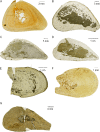
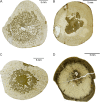

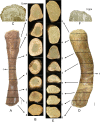

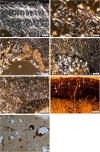



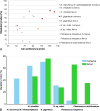
Similar articles
-
The redescription of the holotype of Nothosaurus mirabilis (Diapsida, Eosauropterygia)-a historical skeleton from the Muschelkalk (Middle Triassic, Anisian) near Bayreuth (southern Germany).PeerJ. 2022 Aug 26;10:e13818. doi: 10.7717/peerj.13818. eCollection 2022. PeerJ. 2022. PMID: 36046504 Free PMC article.
-
Long bone histology of sauropterygia from the lower Muschelkalk of the Germanic basin provides unexpected implications for phylogeny.PLoS One. 2010 Jul 21;5(7):e11613. doi: 10.1371/journal.pone.0011613. PLoS One. 2010. PMID: 20657768 Free PMC article.
-
Diverse Aquatic Adaptations in Nothosaurus spp. (Sauropterygia)-Inferences from Humeral Histology and Microanatomy.PLoS One. 2016 Jul 8;11(7):e0158448. doi: 10.1371/journal.pone.0158448. eCollection 2016. PLoS One. 2016. PMID: 27391607 Free PMC article.
-
High diversity, low disparity and small body size in plesiosaurs (Reptilia, Sauropterygia) from the Triassic-Jurassic boundary.PLoS One. 2012;7(3):e31838. doi: 10.1371/journal.pone.0031838. Epub 2012 Mar 16. PLoS One. 2012. PMID: 22438869 Free PMC article. Review.
-
The pachypleurosaurids (Reptilia: Nothosauria) from the middle triassic of Monte San Giorgio (Switzerland) with the description of a new species.Philos Trans R Soc Lond B Biol Sci. 1989 Nov 30;325(1230):561-666. doi: 10.1098/rstb.1989.0103. Philos Trans R Soc Lond B Biol Sci. 1989. PMID: 2575768 Review.
Cited by
-
Thalattosauria in time and space: a review of thalattosaur spatiotemporal occurrences, presumed evolutionary relationships and current ecological hypotheses.Swiss J Palaeontol. 2024;143(1):36. doi: 10.1186/s13358-024-00333-6. Epub 2024 Sep 26. Swiss J Palaeontol. 2024. PMID: 39345254 Free PMC article. Review.
-
Diving dinosaurs? Caveats on the use of bone compactness and pFDA for inferring lifestyle.PLoS One. 2024 Mar 6;19(3):e0298957. doi: 10.1371/journal.pone.0298957. eCollection 2024. PLoS One. 2024. PMID: 38446841 Free PMC article.
-
High phenotypic plasticity at the dawn of the eosauropterygian radiation.PeerJ. 2023 Sep 1;11:e15776. doi: 10.7717/peerj.15776. eCollection 2023. PeerJ. 2023. PMID: 37671356 Free PMC article.
-
Comparative bone histology of two thalattosaurians (Diapsida: Thalattosauria): Askeptosaurus italicus from the Alpine Triassic (Middle Triassic) and a Thalattosauroidea indet. from the Carnian of Oregon (Late Triassic).Swiss J Palaeontol. 2023;142(1):15. doi: 10.1186/s13358-023-00277-3. Epub 2023 Aug 16. Swiss J Palaeontol. 2023. PMID: 37601161 Free PMC article.
-
The redescription of the holotype of Nothosaurus mirabilis (Diapsida, Eosauropterygia)-a historical skeleton from the Muschelkalk (Middle Triassic, Anisian) near Bayreuth (southern Germany).PeerJ. 2022 Aug 26;10:e13818. doi: 10.7717/peerj.13818. eCollection 2022. PeerJ. 2022. PMID: 36046504 Free PMC article.
References
-
- Meyer H, der Vorwelt Zur Fauna. Die Saurier des Muschelkalkes mit Rücksicht auf die Saurier aus buntem Sandstein und Keuper. Frankfurt am Main: Heinrich Keller; 1847-1855.
-
- Rieppel O. Osteology of Simosaurus gaillardoti, and the phylogenetic interrelationships of stem-group Sauropterygia. Field Geol, N S. 1994;28:1–85.
-
- Rieppel O. In: In Encyclopedia of Paleoherpethology. Kuhn PWO, editor. München: Verlag Dr. Friedrich Pfeil; 2000. Sauropterygia I; pp. 1–134.
-
- Liu J, Rieppel O, Jiang D-Y, Aitchison JC, Motani R, Zhang Q-Y, Zhou C-Y, Sun Y-Y. A new pachypleurosaur (Reptilia: Sauropterygia) from the lower Middle Triassic of southwestern China and the phylogenetic relationships of Chinese pachypleurosaurs. J Vert Paleont. 2011;31:292–302. doi: 10.1080/02724634.2011.550363. - DOI
MeSH terms
LinkOut - more resources
Full Text Sources
Other Literature Sources


